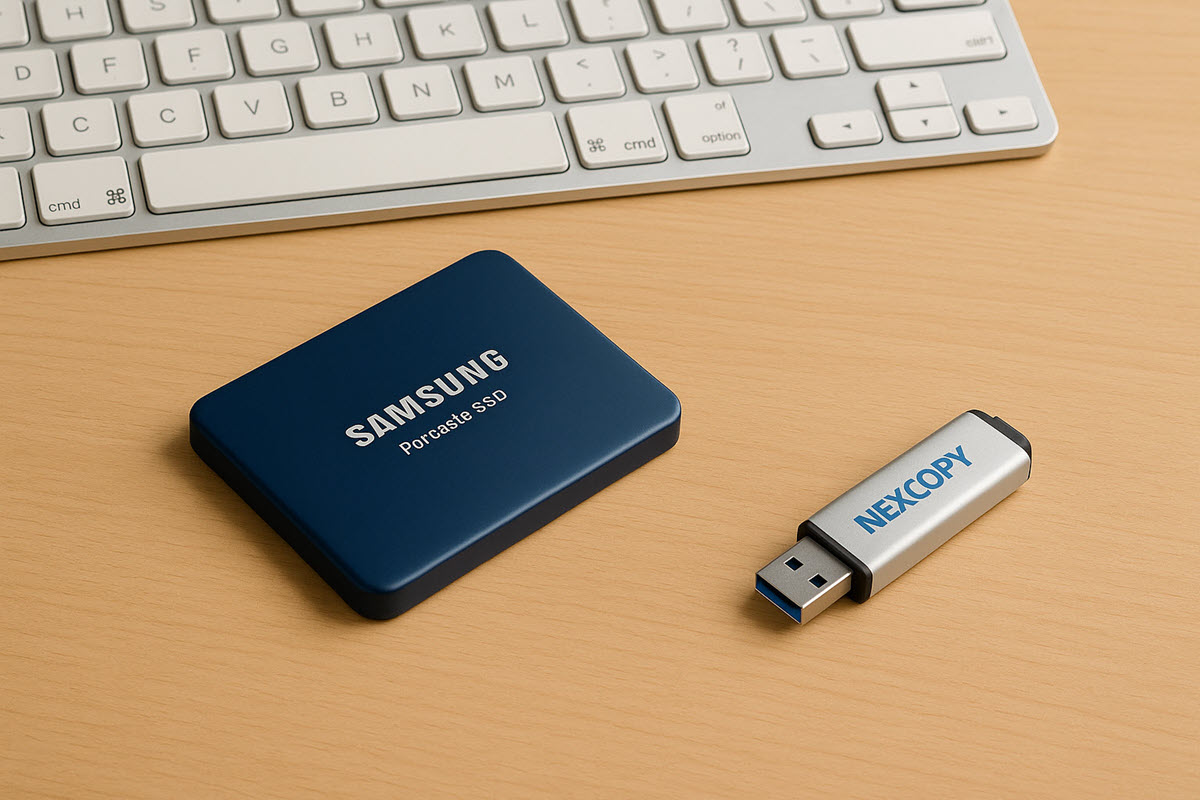USB Local Disk in 2025: The Reliable Way to Make a Flash Drive Appear as a Hard Drive

USB “Local Disk” in 2025: the XP-era hack had its moment—here’s the cleaner way (plus a product we found)
If you landed here from our old tutorial about making a USB stick look like a hard drive, you’re reading a time capsule. That guide leaned on an XP-friendly INF/registry trick (tweaking the removable bit with a modified driver). It was clever back then. On modern Windows 10/11, it’s unreliable, brittle with updates, and a magnet for driver-signing hassles. Even when you shoehorn it in, many apps and corporate policies now check the device class the hardware presents—not the label you forced with a file edit.
What changed under the hood
- Windows storage stacks matured (UASP, policy and security hardening), and driver signing isn’t casual anymore.
- Backup, imaging, and install tools increasingly verify “fixed disk” at the hardware level. A spoofed driver doesn’t pass that sniff test.
- Enterprise environments often block or restrict “removable” media regardless of what the OS UI says.
What actually works now
You start with hardware that natively enumerates as a fixed disk. No patched drivers, no post-install gymnastics. The device tells Windows, “I’m a hard drive,” and everything—from Disk Management to BitLocker to fussy installers—behaves accordingly. The brilliant bit about this method is the configuration follows the device. No more editing every PC the USB is connected to.
A product that does exactly that
We found a solution from Nexcopy called USB HDD Fixed Disk . It’s a USB flash device configured at the controller/firmware level to appear as a Fixed Disk / Local Disk on any computer. No utilities to run, no INF edits, no per-PC setup—just plug in and it registers as a hard drive.
Why a hardware-first approach is better than the old hack
- Reliability: Survives Windows updates and group policy changes because it isn’t pretending.
- Partitioning that actually mounts: Multiple volumes behave like they do on a normal HDD/SSD.
- Tool compatibility: Imaging, deployment, encryption, and installers that demand “Local Disk” stop arguing.
- Fleet-friendly: If you manage a lab or ship USBs to customers, you don’t want to hand out driver instructions.
Quick look at Nexcopy’s USB HDD Fixed Disk
- Hardware-set fixed disk (not a software toggle), so the OS identifies it as a hard drive.
- Works across OSes as a Local Disk without special drivers.
- Good fits: Windows-to-Go-style workflows, software that refuses “removable,” deployment/imaging, and scenarios needing multiple hard drive partitions.
- Options that matter: Available in USB 2.0/3.0 capacities starting at 2 GB, with compliance listings (CE, FCC, UL, RoHS).
- Extras for controlled distribution: Duplication equipment available for bulk deployment.
- Duplication equipment can enable write protection for a read-only state.
Should you switch? A quick self-check
Multiple partitions on a USB flash drive? If that is your goal, Windows will allow you to make multiple partitions on a flash drive. The device will not appear as a fixed disk hard drive, but the multi-partition setup is there. Stick with a standard USB drive.
Fixed Disk best suited for scenarios like:
- Running software that refuses to install on “removable” media (example: Apple iTunes for Windows, which sparked this topic).
- You want compatibility with apps or tools that expect “Local Disk” behavior, full-disk imaging, or BitLocker handling that mimics an internal drive.
- Your environment restricts or blocks standard USB flash drives ? Fixed-disk hardware can be the practical workaround.
- Many corporate policies auto-block removable-class storage, but allow devices that enumerate as fixed disks at the controller level.
Migration playbook (five steps)
- Retire the INF/registry edit from any surviving XP-era setups; don’t carry that forward.
- Get a fixed-disk USB (we used Nexcopy’s USB HDD Fixed Disk).
- Initialize and partition like you would any HDD/SSD (create one or several volumes and assign letters).
- Test with your real tools—backup, imaging, encryption, installers—so you know the new media clears the checks.
- Document your steps for teammates so nobody burns time resurrecting the XP trick.
Common questions we hear
“Can I convert my current stick into a fixed disk with software?”
Not reliably. The controller firmware decides. That’s why the old driver hack kept breaking.
“Will this work on locked-down corporate images?”
In our testing, hardware-enumerated fixed disk behaves like any other HDD. Policies aimed at “removable” media are less likely to interfere.
“What if I need read-only distribution?”
Nexcopy pairs the fixed-disk drives with duplicators that can write-protect batches before you ship them.
Bottom line
The XP method taught a neat lesson about Windows storage, but today you want the result, not the workaround. If your workflow truly needs a USB device that behaves like a hard drive, start with hardware that identifies as one. We found Nexcopy’s USB HDD Fixed Disk to be a straight-shot way to get there—cleaner setup, better compatibility, and no surprises after Patch Tuesday.
Original Article Starts Now
Trackback from your site.
